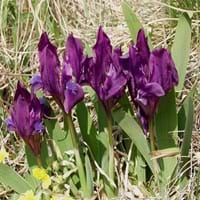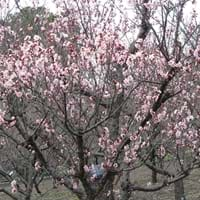Life Span
Perennial
Perennial
Origin
Eastern Europe
China, Korea
Types
Not Available
Not Available
Habitat
Terrestrial
All sorts of environments, Fertile bottom land, Well Drained
USDA Hardiness Zone
4-9
6-9
Sunset Zone
1a, 1b, 2a, 2b, 3a, 3b, 4, 5, 6, 7, 8, 9, 10, 11, 12, 13, 14, 15, 16, 17, 18, 19, 20, 21, 22, 23, 24
3a, 3b, 4, 5, 6, 7, 8, 9, 12, 13, 14, 15, 16, 17, 18, 19, 20, 21, 22
Habit
Clump-Forming
Oval or Rounded
Flower Color
Yellow, Lavender, Blue Violet
White, Pink, Rose
Flower Color Modifier
Bicolor
Bicolor
Fruit Color
Not Available
Yellow
Leaf Color in Spring
Green, Sea Green
Green
Leaf Color in Summer
Green, Sea Green
Green
Leaf Color in Fall
Green, Sea Green
Yellow, Light Yellow, Yellow green
Leaf Color in Winter
Light Green
Not Available
Leaf Shape
Lanceolate
Aristate
Plant Season
Spring, Summer
Spring, Winter
Sunlight
Full Sun, Partial Sun
Full Sun, Partial Sun
Type of Soil
Loam, Sand
Clay, Loam
The pH of Soil
Neutral
Acidic, Neutral
Soil Drainage
Well drained
Well drained
Bloom Time
Spring, Late Spring, Early Summer
Early Spring, Early Winter, Winter, Late Winter
Tolerances
Drought
Not Available
Where to Plant?
Ground
Ground
How to Plant?
By dividing rhizomes, tubers, Seedlings
Budding, Seedlings
Plant Maintenance
Medium
Medium
Watering Requirements
Average Water Needs, Do Not over Water
Average Water Needs, Does not require lot of watering, Water more frequently during periods of extreme drought
In Summer
Lots of watering
Lots of watering
In Spring
Moderate
Moderate
In Winter
Average Water
Average Water
Soil pH
Neutral
Acidic, Neutral
Soil Type
Loam, Sand
Clay, Loam
Soil Drainage Capacity
Well drained
Well drained
Sun Exposure
Full Sun, Partial Sun
Full Sun, Partial Sun
Pruning
Remove damaged leaves, Remove dead branches, Remove dead leaves
Remove damaged leaves, Remove dead branches, Remove dead leaves
Fertilizers
All-Purpose Liquid Fertilizer
All-Purpose Liquid Fertilizer, Apply N-P-K, fertilize in growing season
Pests and Diseases
Red blotch
Pests and diseases free, Red blotch
Plant Tolerance
Drought
Drought, Full Sun
Flower Petal Number
Single
Single
Foliage Texture
Coarse
Medium
Foliage Sheen
Matte
Not Available
Attracts
Hummingbirds
Birds
Allergy
Skin irritation
Not Available
Aesthetic Uses
Showy Purposes
Not Used For Aesthetic Purpose
Beauty Benefits
Not Available
Not Available
Environmental Uses
Air purification
Air purification
Medicinal Uses
No Medicinal Use
antimicrobial, Gastrointestinal disorders, Ulcers
Part of Plant Used
Not Available
Flowers, Fruits
Other Uses
Used as Ornamental plant
Sauces, Sometimes used for making wine
Used As Indoor Plant
No
No
Used As Outdoor Plant
Yes
Yes
Garden Design
Alpine, Edging, Mixed Border, Rock Garden, Wall
Feature Plant, Fruit / Fruit Tree, Shade Trees, Street Trees
Botanical Name
IRIS pumila
PRUNUS mume
Common Name
Dwarf Iris
Japanese Apricot
In Hindi
Dwarf Iris
जापानी खुबानी
In German
Zwergiris
japanische Aprikose
In French
Dwarf Iris
abricot japonais
In Spanish
Enano Iris
albaricoque japonés
In Greek
νάνος Ίρις
Ιαπωνικά Βερίκοκο
In Portuguese
Dwarf Iris
Apricot japonês
In Polish
Dwarf Iris
japońska morela
In Latin
Iris Dwarf
Persicum Italica
Phylum
Magnoliophyta
Tracheophyta
Class
Liliopsida
Magnoliopsida
Family
Iridaceae
Rosaceae
Clade
Angiosperms, Monocots
Angiosperms, Eudicots, Rosids
Tribe
Irideae
Not Available
Subfamily
Iridoideae
Not Available
Number of Species
Not Available
Not Available
Season and Care of Dwarf Iris and Japanese Apricot
Season and care of Dwarf Iris and Japanese Apricot is important to know. While considering everything about Dwarf Iris and Japanese Apricot Care, growing season is an essential factor. Dwarf Iris season is Spring and Summer and Japanese Apricot season is Spring and Summer. The type of soil for Dwarf Iris is Loam, Sand and for Japanese Apricot is Clay, Loam while the PH of soil for Dwarf Iris is Neutral and for Japanese Apricot is Acidic, Neutral.
Dwarf Iris and Japanese Apricot Physical Information
Dwarf Iris and Japanese Apricot physical information is very important for comparison. Dwarf Iris height is 10.20 cm and width 15.20 cm whereas Japanese Apricot height is 550.00 cm and width 550.00 cm. The color specification of Dwarf Iris and Japanese Apricot are as follows:
Dwarf Iris flower color: Yellow, Lavender and Blue Violet
Dwarf Iris leaf color: Green and Sea Green
Japanese Apricot flower color: White, Pink and Rose
- Japanese Apricot leaf color: Green
Care of Dwarf Iris and Japanese Apricot
Care of Dwarf Iris and Japanese Apricot include pruning, fertilizers, watering etc. Dwarf Iris pruning is done Remove damaged leaves, Remove dead branches and Remove dead leaves and Japanese Apricot pruning is done Remove damaged leaves, Remove dead branches and Remove dead leaves. In summer Dwarf Iris needs Lots of watering and in winter, it needs Average Water. Whereas, in summer Japanese Apricot needs Lots of watering and in winter, it needs Average Water.





